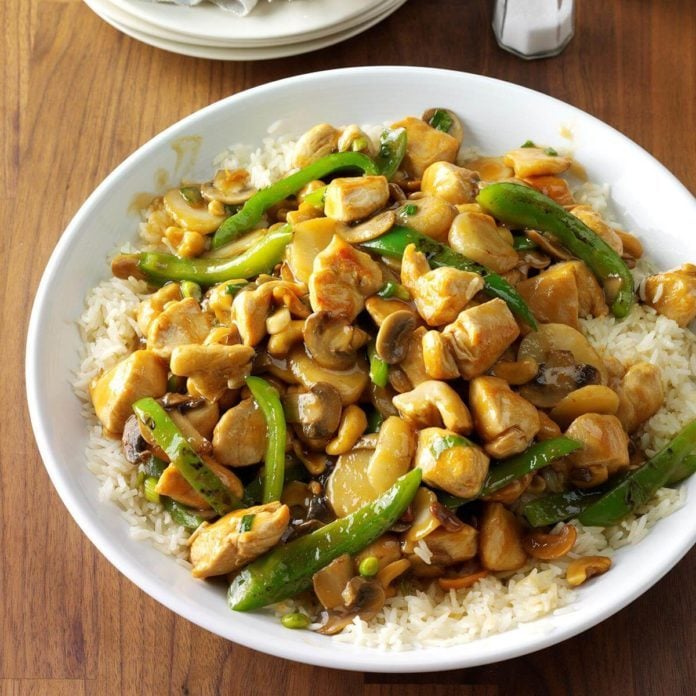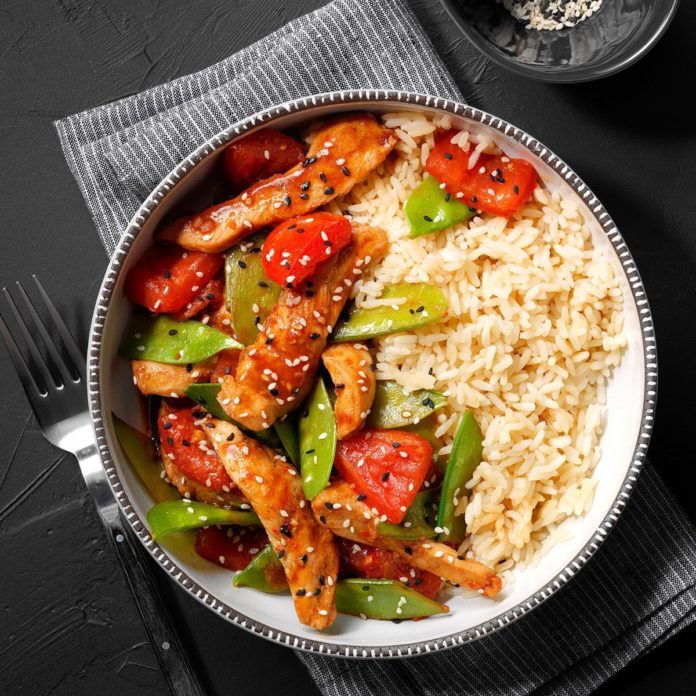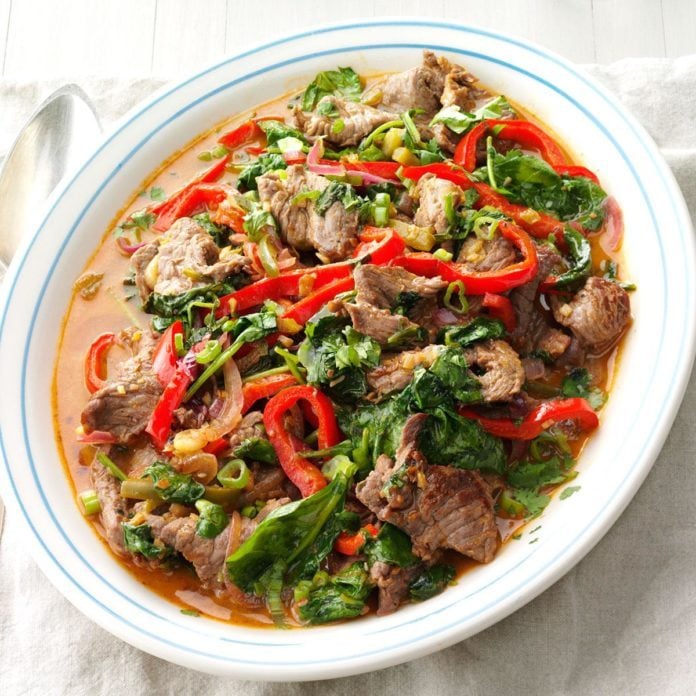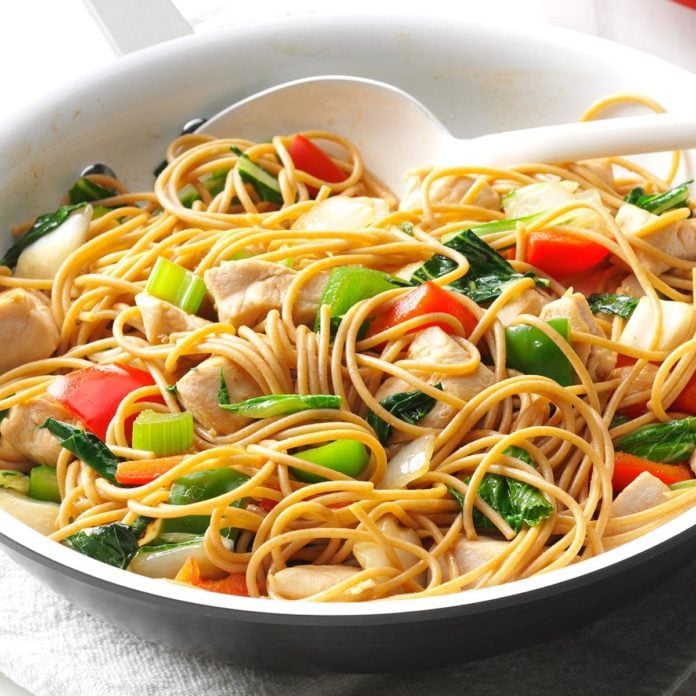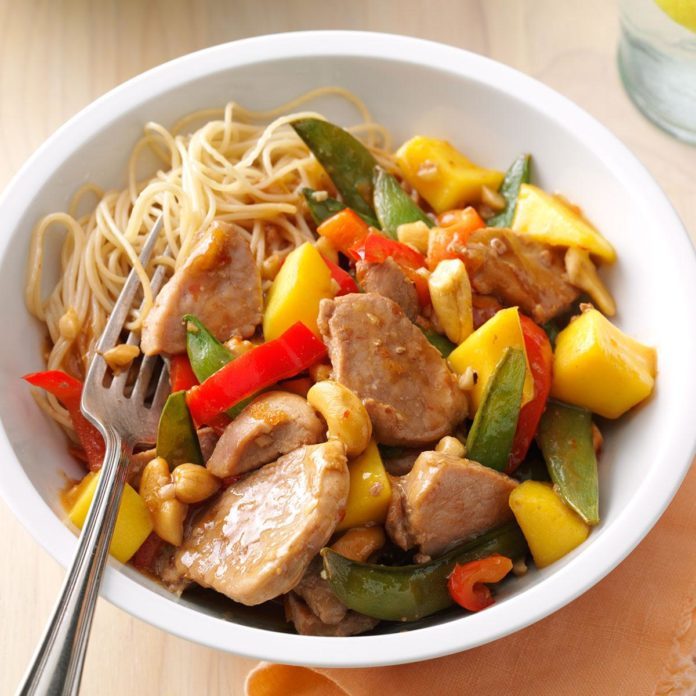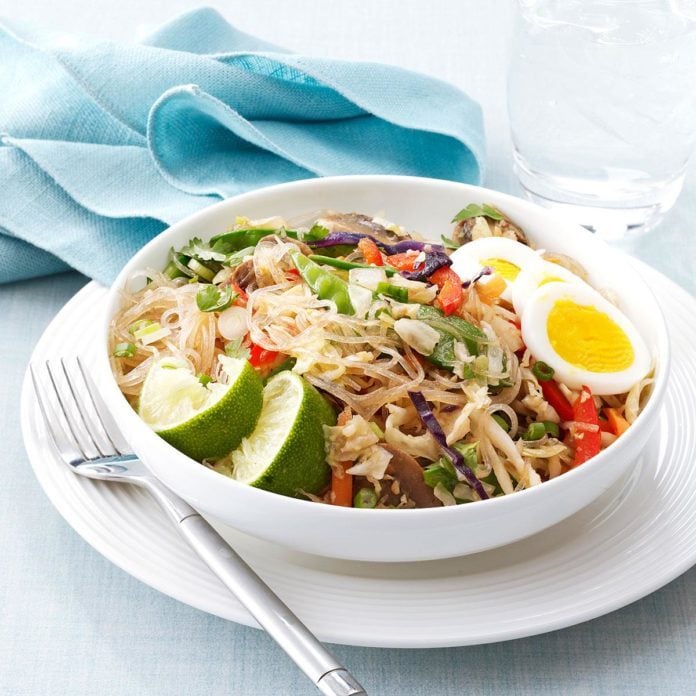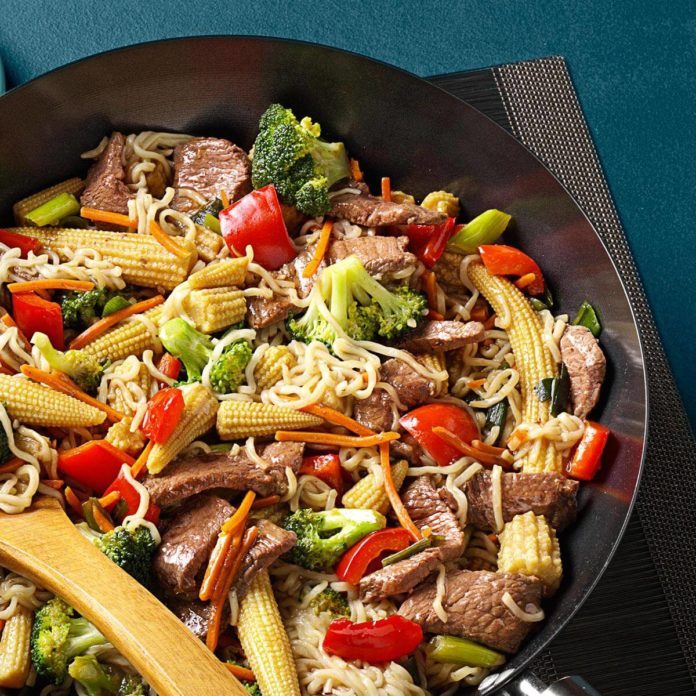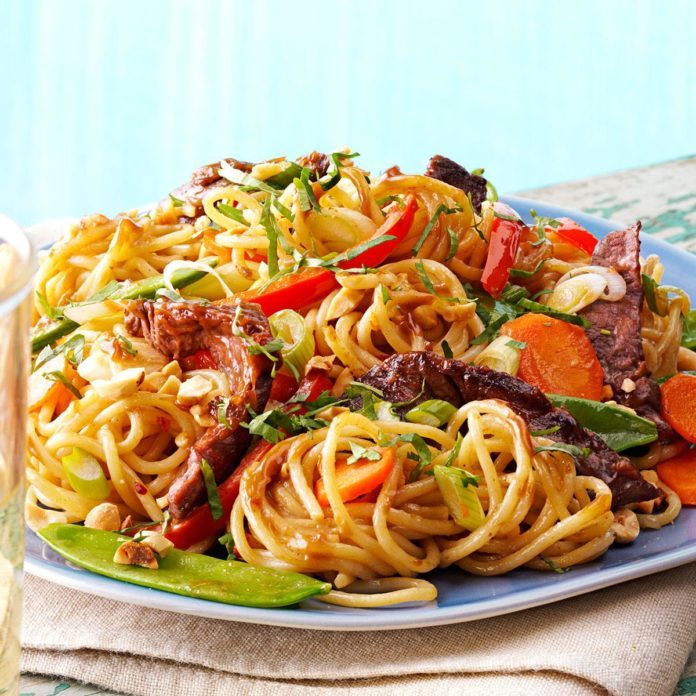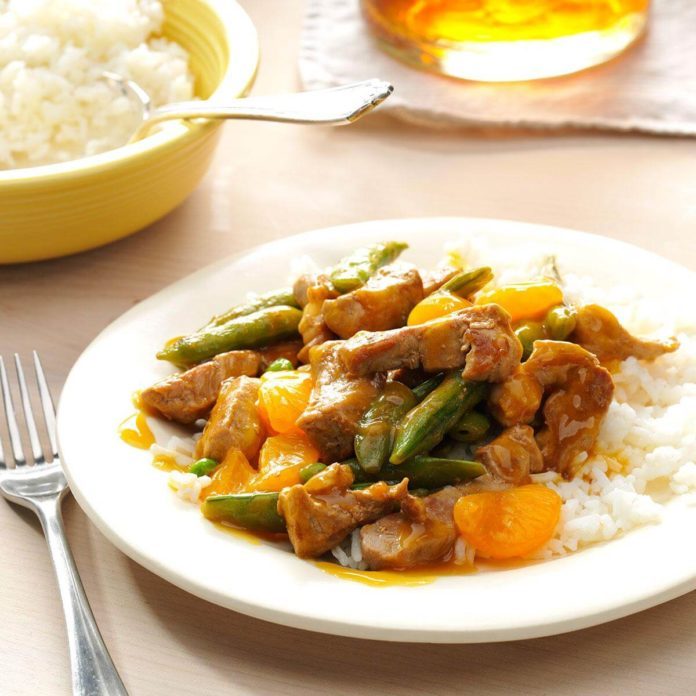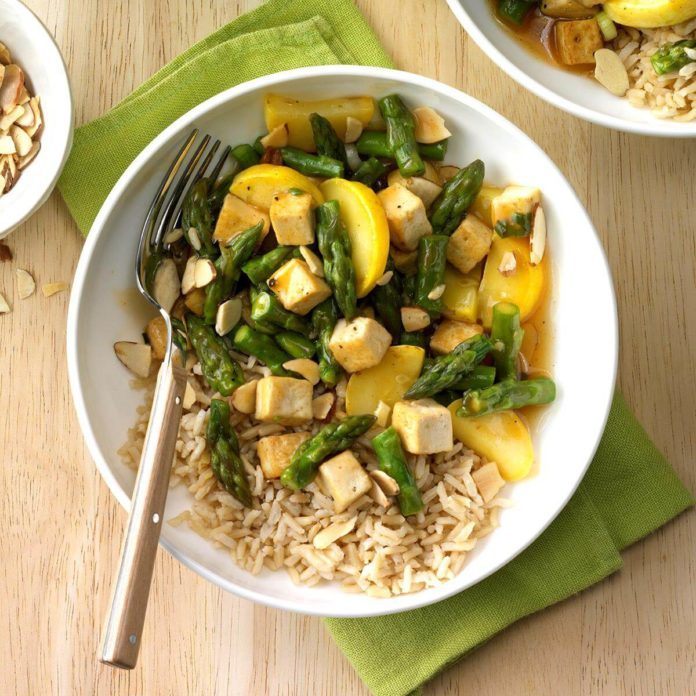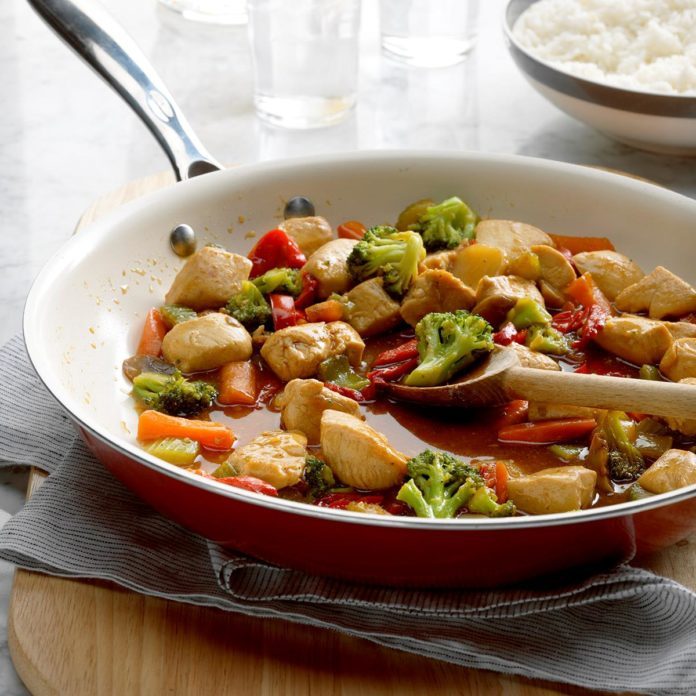Stir fry conjures up an impressive cooking experience: a chef flipping food into a sizzling pan, vegetables and meat tumbling in the air and releasing a savory, irresistible aroma. But stir-fry shouldn’t be a special occasion or restaurant-only food. When done right, most stir-fries make an ideal meal for a busy family weeknight.
The only tool you need to make delicious stir-fry at home? A wok. Most are inexpensive and easy to use. Here’s how to shop for the best wok.
These are the 21 essential kitchen tools every cook should own.
Why You Need a Wok to Stir Fry
We’ve all made stir-fry in a frying pan or sauteé pan before: It’s passable, but neither pan is ideal. Frying pans are too flat to move food around; sauteé pans too likely to make food steam rather than sizzle.
Stir-frying is a fast, high-heat cooking method. You want every piece of food to cook quickly, with a dry heat so it browns rather than softens, and to allow many different vegetables and meats to cook simultaneously. Woks are designed specifically for stir-fry magic for a few reasons:
- They have high sides that make it easy to toss and flip every bite of food.
- Their flared sides also allow steam to escape rather than remain in the pan and soften the food.
- Lastly, woks are made from a thin material compared to most everyday pans, which allows heat to conduct quickly and efficiently.
All great woks should have those three elements—the high sides, flared design, and thin conductive material.
Get started on stir-fry with these Asian-inspired recipes.
Here’s How to Choose the Best Wok
Materials
Woks should be made with a very conductive metal, and preferably one that’s also lightweight. Carbon steel is a popular choice. Aluminum is another lighter weight option. Cast-iron woks will be heavier, but if you love cast iron’s browning and don’t mind its upkeep, it’s a good choice. (Want to geek out? We break down the difference between the most popular cookware materials.)
Nonstick vs. Seasoned
You definitely don’t want food to stick to the pan in a high heat situation. A material like carbon steel can be seasoned with oil, just like your best cast-iron pan, which creates a naturally nonstick surface that will improve with every use.
Many woks come with a nonstick coating. This is easy to clean and keeps food gliding over the surface. On the other hand, a nonstick coating usually can’t handle a cooking temperature over medium heat, which means your stir-fry won’t be as crisp as it could be over a hotter temp. Finally, nonstick coatings tend to wear down over time. This non-stick Calphalon wok ($60) has rave reviews.
Flat vs. Curved Base
Many woks have curved bases, with allow food to be tossed around easily and allow heat to travel the curved sides of the pan most efficiently. Curved bottom woks work best when placed in a wok ring: a round collar that holds the wok over a burner (typically a gas burner).
Cooking directly on a gas or electric burner? You want to look for a wok with a flat base, which will allow it to sit directly over the burner and conduct heat. In general, it’s easier to stir-fry on a gas stove than an electric one, because gas burners tend to be hotter. If your electric stove gets nice and hot, then you’ll likely be able to stir-fry just fine. Otherwise, you may want to pick up an electric wok (more on that below).
Handles
Typically, woks either have two small metal handles (like ears) or one small handle and a longer, wooden one. If you like to be able to easily lift the pan without a potholder, the wooden handle is a nice feature. In general, though, you’ll use handles mainly to place the wok on the stove, where it should sit flat for the entire cooking time while you flip and stir with a spatula.
Size
Cooking for a big family, or regularly host dinner parties? Go ahead and get a big wok (some are as large as six or eight quarts).
If you mostly cook for two or three, seek out a smaller model. Cooking a small amount of food in a too-large pan makes it easy to burn the food, and to scorch the cooking oil, which gives food a bitter taste.
What About an Electric Wok?
Stand-alone electric woks have a built-in heat element, which lets cooks plugin anywhere and get cooking. They offer a high, consistent heat that’s ideal for stir-frying. If you have a small or not-very-powerful stovetop, an electric wok is a great option. Some cooks may value the flexibility of the plug-in wok, as well, which lets you cook anywhere: your kitchen, camper or church basement. On the downside, they’re much more expensive than woks, and are bulkier to store.
Delish Stir-Fries to Try Tonight
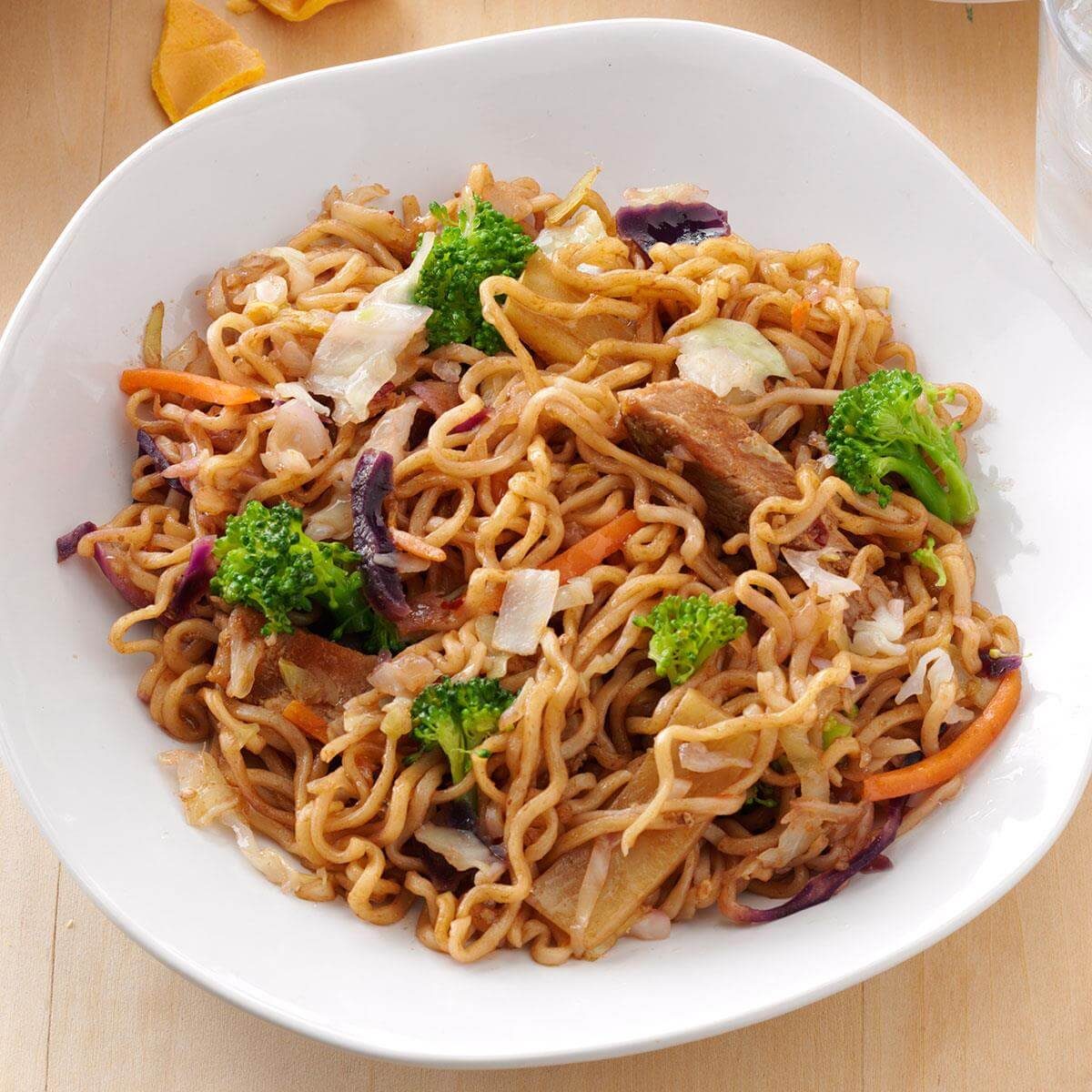
I normally serve a traditional stir-fry, but I wanted to change it up. Ramen noodles are a quick sub for the rice, and we really like the crisp-tender bite from fresh broccoli and a package of coleslaw mix. —Barbara Pletzke, Herndon, Virginia
Get Recipe
I love to experiment with food. We're able to buy sweet onions grown on Maui, so I stir-fry them with chicken and carrots for a tasty teriyaki meal. —Kelly Brenneman, Riverdale, California
Get Recipe
Getting my meat-loving husband and two sons, ages 5 and 7, to eat more veggies has always been a struggle until I whipped up this stir-fry one night. I was shocked when they cleaned their plates and asked for seconds. —Abbey Hoffman, Ashland, Ohio
Get Recipe
There are lots of recipes for cashew chicken, but my family thinks this one stands alone. We love the flavor from the fresh ginger and the crunch of the cashews. Another plus is it's easy to prepare. —Oma Rollison, El Cajon, California
Get Recipe
My kids are picky eaters, but teriyaki and hoisin sauces work wonders with them. They love the meatballs, and I swap the noodles for whole grain pasta. —Kelly Shippey, Orange, California
Get Recipe
Just open a bottle of Thai peanut sauce to give this seafood stir-fry some serious authenticity. —Taste of Home Test Kitchen
Get Recipe
This is a different, fun way to make chicken. It has a lot of flavor and a bit of heat for good measure. —Mary Ann Lee, Clifton Park, New York
Get Recipe
Think of this stir-fry as your chance to play with heat and spice. I balance the beef with coconut milk and a spritz of lime. —Joy Zacharia, Clearwater, Florida
Get Recipe
Stir-fry noodles on a cooking show caught my eye. I ran with the idea and loaded it with veggies. Now it’s our favorite hurry-up meal. —Beverly Norris, Evanston, Wyoming
Get Recipe
Bright, fresh veggie flavors, a splash of tart lime juice, the crunch of peanuts and a hint of heat make this healthy and beautiful shrimp stir-fry a real standout! —Taste of Home Test Kitchen
Get Recipe
A recipe is special when everyone in your family raves about it. My finicky eaters give thumbs up for this hearty, nutty stir-fry. —Kathleen Specht, Clinton, Montana
Get Recipe
Salmon is a staple where I live, so I tried it in a stir-fry. My recipe has an orange glaze, but I like it with lime, too. —Joni Hilton, Rocklin, California
Get Recipe
I really like the rich taste of sesame oil in this Thai-inspired dish. If you don't have it, canola oil does the trick, too. To get a similar nuttiness, toss in a handful sliced almonds before serving. —Kelli Whiting, Fortville, Indiana
Get Recipe
My mom immigrated from the Philippines, so we would often eat Filipino pancit, a well-known glass noodles dish. I took her version and added my own touches to make it easier and a little healthier. —Jasmin Baron, Livonia, New York
Get Recipe
I created this recipe when I was craving good Chinese food. The leftovers taste just as yummy when reheated the next day. —Annette Hemsath, Sutherlin, Oregon
Get Recipe
This Asian stir-fry is a household best bet. The spicy sauce works with chicken, seafood, pork or beef. Add whatever veggies you have on hand. —Kristin Rimkus, Snohomish, Washington
Get Recipe
This was a spur-of-the-moment experiment when we wanted something nice and filling, but also easy. I had steak, peppers and onion on hand, and this is what my mind created. We make it often. For something different, try it in tortillas for fajitas. —Rochelle M. Dickson, Potwin, Kansas
Get Recipe
This stir-fry has been a family favorite for some time. I like to double the recipe and add extra vegetables. —Janelle Lee, Appleton, Wisconsin
Get Recipe
All the high school students at the school where I work love this scrumptious chicken dish. It is the most requested recipe I have. —Kris Campion, Marshall, Minnesota
Get Recipe
The vibrant, crisp pea pods in this dish are a nice contrast with the soft scallops. The dish looks and tastes bright and fresh. —Barb Carlucci, Orange Park, Florida
Get Recipe
The solution to expensive Chinese takeout is right here. I think this pork stir-fry is much tastier than any takeout I've tried. —Susan Jones, Appleton, Wisconsin
Get Recipe
Take your go-to Asian restaurant off speed dial; this is hands down better than takeout! Leftover grilled steak, fresh veggies and a sweet orange glaze—see what we mean? —Cindy Johnson, Colorado Springs, Colorado
Get Recipe
I made this recipe a lot when I was juggling college, work and a growing family. It tastes like you spent a lot of time making it, yet only takes minutes to pull together. —Sally Sibthorpe, Shelby Township, Michigan
Get Recipe
I created a citrusy version of General Tso's chicken. Top with sesame seeds and green onions, roasted red peppers and sugar snap peas. —Paula Williams, Covington, Kentucky
Get Recipe
My family loves stir-fries, and I love them even more because they are healthy and easy to prepare. I’ve been making this recipe for years. —Sherri Melotik, Oak Creek, Wisconsin
Get Recipe
This is one of my favorite meals for busy weeknights. You can prepare all the ingredients the day before and then put the dish together just before dinner. —Elizabeth Brown, Lowell, Massachusetts
Get Recipe
An easy homemade stir-fry sauce is the perfect base for this weeknight dish. It comes together quickly, creating a skillet of tender pork infused with Asian flavors. —Adeline Russell, Hartford, Wisconsin
Get Recipe
Fruit cocktail in stir-fry? You might be surprised by how good this dish is. It's a promising go-to option when time's tight. —Jeanne Holt, Mendota Heights, Minnesota
Get Recipe
If you like a good stir-fry, this dish will definitely satisfy. I discovered the recipe at an international luncheon, and it's now a favorite go-to meal. —Denise Patterson, Bainbridge, Ohio
Get Recipe
When my husband and I were dating, he told me he liked Asian food. I got a wok and discovered the joy of dishes like this pork stir-fry. —Laurie Martignon, Niagara, Wisconsin
Get Recipe
We love how the snappy veggies and pineapple make this stir-fry taste fresh and bright. Add brown sugar and you get a sweet-and-sour dish that’s packed with flavor. —DeEtta Rasmussen, Fort Madison, Iowa
Get Recipe
With its flavorful ginger sauce and fresh vegetables, this tasty dish is a favorite. I get rave reviews every time I serve it, and it doesn’t bother my husband’s food allergies. —Phyllis Smith, Chimacum, Washington
Get Recipe
After a tiring but beautiful day of fishing, this is a fast and delicious way to serve our famous Key West pink shrimp. It's always a big hit with guests.
Get Recipe
Traditional Asian flavors combine for a super supper that will please the whole family. —Simple & Delicious Test Kitchen
Get Recipe
Twenty minutes is all you'll need to make this quick stir-fry. Lean turkey, asparagus and mushrooms make it super nutritious, too. —Darlene Kennedy, Galion, Ohio
Get Recipe
Here’s a shrimp dish with sweet coconut milk, complemented by the spiciness of curry. Jasmine rice makes a fragrant bed for the sumptuous stir-fry. —Cindy Romberg, Mississauga, Ontario
Get Recipe
Served over quick-cooking ramen noodles, this stir-fry is perfect for busy families on hurried weeknights. Not only do we love the taste, but it comes together in about half an hour. —Barbara Schindler, Napoleon, Ohio
Get Recipe
I'm a new mom, and my schedule is very dependent upon our young son, so I like meals that can be ready in as little time as possible. This all-in-one chicken stir fry recipe with a hint of sweetness from honey is a big time-saver. —Caroline Sperry, Allentown, Michigan
Get Recipe
I combined several recipes to come up with this dish that my family loves. It is not only quick and delicious but also healthy. I sometimes substitute boneless, skinless chicken breasts for the pork. —Joan Hallford, North Richland Hills, Texas
Get Recipe
My meatless version of Korean bibimbap is tasty, pretty and easy to tweak for different spice levels. —Devon Delaney, Westport, Connecticut
Get Recipe
The post Wok Buying Guide: How to Find the Best Wok appeared first on Taste of Home.
Kelsey Rae Dimberg



